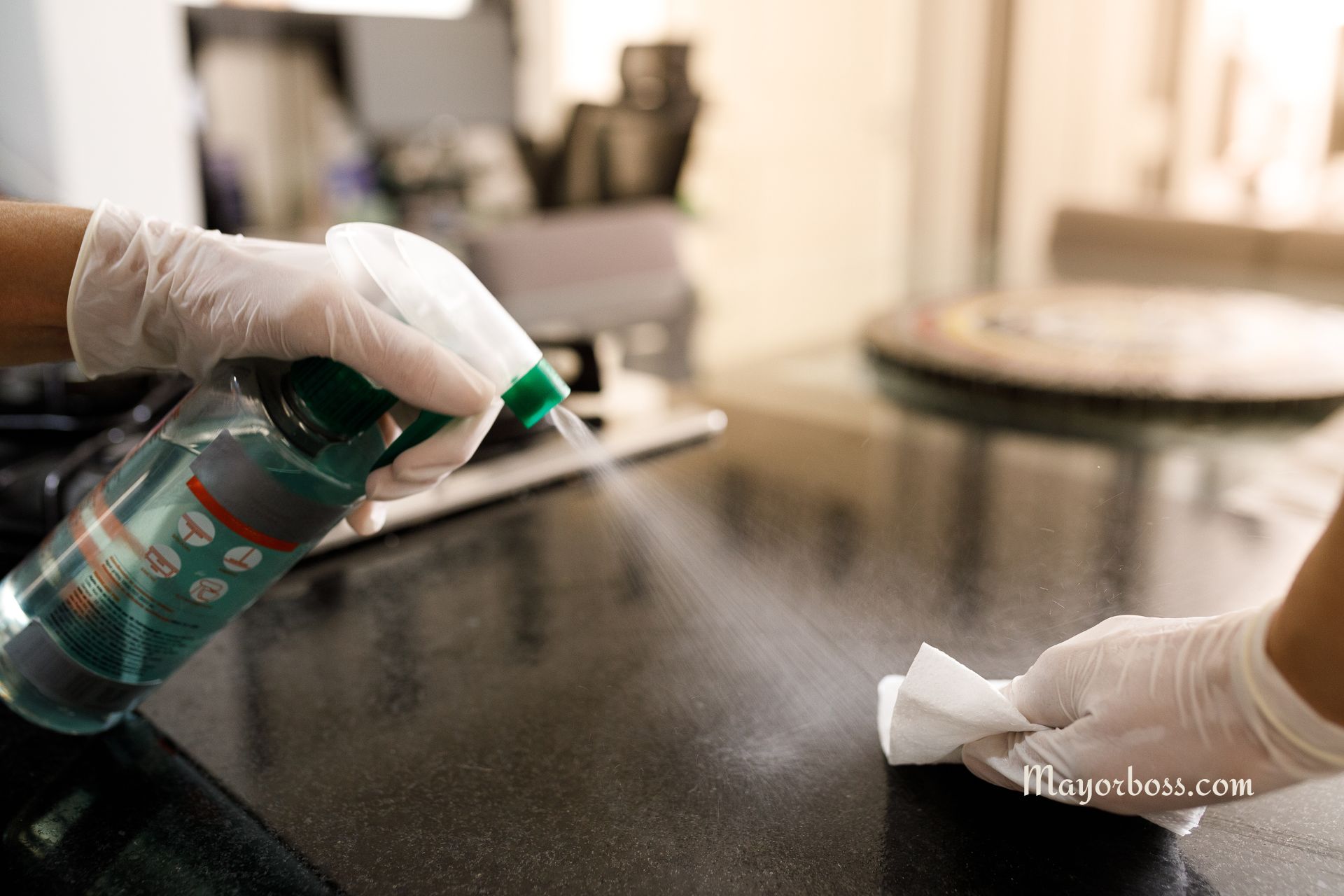You Really Shouldn’t Use Rubbing Alcohol to Clean Your Painted Surfaces
Rubbing alcohol (also known as isopropyl alcohol) is a handy household staple for many things, including cleaning and disinfecting. However, when it comes to your painted surfaces, it’s best to leave the rubbing alcohol in the medicine cabinet.

Why Rubbing Alcohol Is a Bad Choice for Painted Surfaces
Rubbing alcohol is a potent solvent. Solvents are substances that can dissolve other materials. In the case of paint, here’s why that’s problematic:
- Paint Damage: Rubbing alcohol can break down the binders in paint, leading to softening, fading, or even complete removal of the paint. This can ruin the finish and even expose the underlying surface.
- Loss of Sheen: Even if it doesn’t completely remove the paint, rubbing alcohol can strip away the glossy or semi-glossy finish, leaving your surfaces looking dull and flat.
- Surface Vulnerability: When you wipe paint with rubbing alcohol, you remove its protective coating, making your painted surface more prone to scratches, stains, and general wear and tear
Types of Paint Particularly at Risk
While rubbing alcohol isn’t ideal for any painted surface, certain paint types are especially vulnerable:
- Latex Paint: This common type of paint is used on walls and sometimes furniture. Due to its water-based composition, it can be especially prone to softening and even streaking when rubbed with alcohol.
- Oil-Based Paint: While more durable than latex, oil-based paints can still lose their color, shine, and overall integrity when exposed to harsh solvents like rubbing alcohol.
- Older or Weathered Paint: Paint that is already somewhat deteriorated due to age or weathering is far more susceptible to damage from rubbing alcohol.
Safe Alternatives for Cleaning Painted Surfaces
Luckily, there are plenty of gentler ways to clean painted surfaces without risking damage:
- Mild Dish Soap and Water: This classic cleaning solution is surprisingly effective. Combine a small amount of gentle dish soap with warm water and use a soft sponge or microfiber cloth to gently wipe down the surface.
- Vinegar and Water: For tougher stains or grime, mix a solution of equal parts white vinegar and water. Its mild acidity works as a natural cleaning agent. Be cautious with vinegar around any unsealed areas, as extended exposure could be an issue.
- Specialized Cleaning Products: There are many commercial cleaners formulated safe for use on painted surfaces. Be sure to check the label to ensure it’s compatible with your specific paint type.
When Might Rubbing Alcohol Be Alright?
There are a few limited situations where you might carefully use rubbing alcohol:
- Small, Stubborn Stains: If you have a specific, hardened stain (like ink or glue) on a small area, you can try dabbing it with a cotton ball soaked in diluted rubbing alcohol. Diluted is key here – always mix at least 50% water with the alcohol. Avoid excessive scrubbing, and immediately rinse the area with clean water afterward.
- Preparing for a Touch-up: If you absolutely need to touch up a small paint job, rubbing alcohol can help eliminate grease or oil buildup for better adhesion of the new paint. Ensure the surface is completely dry before applying fresh paint.
Frequently Asked Questions
1. Why does rubbing alcohol ruin paint? It’s the chemical structure of rubbing alcohol that makes it a paint-damaging solvent. It breaks down the binders that hold the paint together, leading to degradation of the finish.
2. Can I use rubbing alcohol on any other surfaces in my home? It’s a common misunderstanding that rubbing alcohol is suitable for all surfaces. Avoid using it on materials like leather, natural stone, and unsealed wood, as it can cause damage or discoloration.
3. I spilled rubbing alcohol on my painted dresser. What should I do?
Act quickly! Wipe up the spill immediately with a damp cloth and rinse the area thoroughly with clean water.
